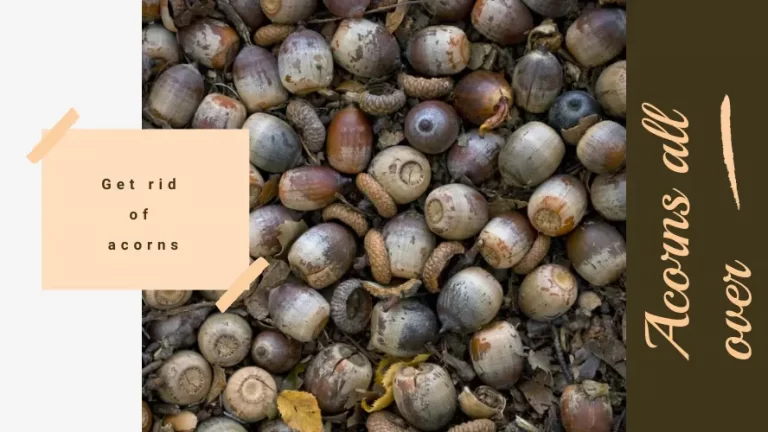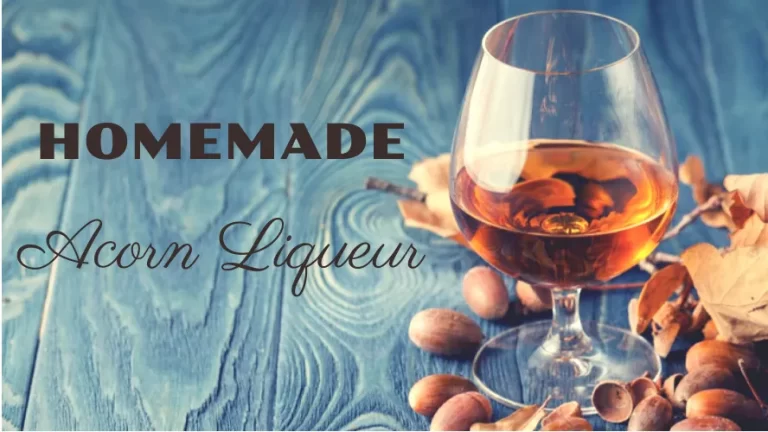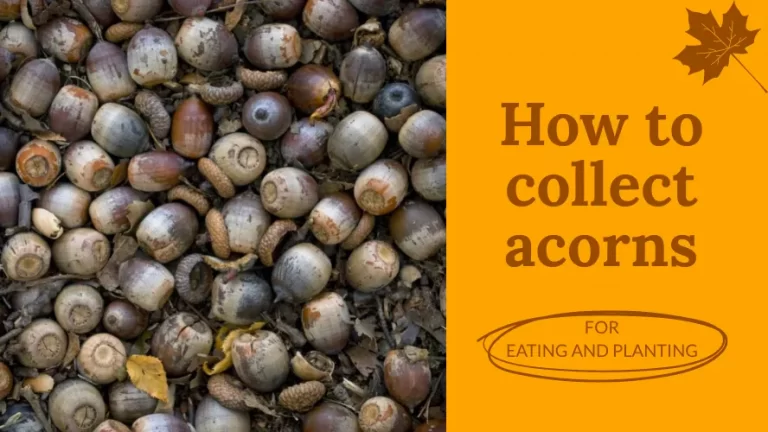The Acorn Culture in the Iberian Peninsula

The Iberian Peninsula is home to a rich diversity of oak trees. It celebrates acorns as a natural treasure and cornerstone of its cultural heritage. This bond with acorns stretches back millennia, infusing the local cuisine and economy with a unique acorn-inspired flair.
My fascination grew with each encounter of acorn’s inventive applications across Iberia. Given our shared passion for all things nuts, it felt natural for us to dedicate a blog post to exploring the cultural, culinary, and economic significance of acorns throughout the Iberian landscape.
For simplicity, I’ll use ‘Iberia’ to refer to this enchanting region, which encompasses both Spain and Portugal, as we dive into this nutty journey.
When Did They Start Using Acorns in Iberia?
Archaeological findings suggest that acorns have been used in Iberia since the Iron Age, thousands of years ago. To be more precise, the Iron Age started in different periods around Europe, but in this area, it began around the 8th century BC.
The Food of Invincible Men
While visiting Portugal and discussing acorns with locals in shops and farms, I heard some people calling them “the food of invincible men.” After some researching and asking around, I started to understand why they call it like that.
The Lusitanians
Many peoples and tribes used acorns in this region. However, the most popular were the Lusitanians. They lived during the Iron Age in an area called Lusitania that included the center and south of what is now Portugal, and a small part of southwestern Spain (keep in mind that both countries still didn’t exist).
In fact, the Lusitanans are considered the ancestors of the Portuguese people, and Lusitania is still an alternative name for Portugal. Here is a map of the old region of Lusitania (the region in pink).
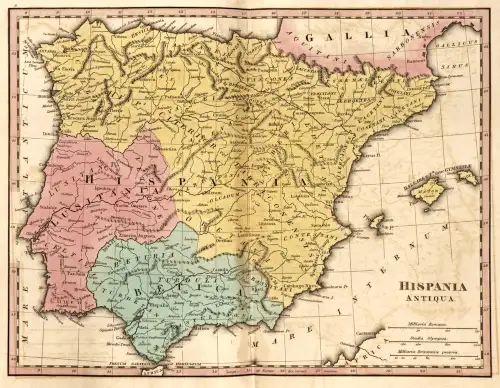
They are seen as courageous warriors who fought the Romans bravely and kept them from conquering all of Iberia for many years, despite the tremendous numerical disadvantage.
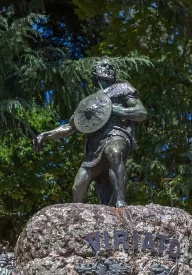
On the right, you can see the statue of Viriatus in the city of Viseu, Portugal, where many historians believe he was from. Viriatus is considered the bravest and most cunning leader of the Lusitanians.
Acorns were very important to the Lusitani, who used them as a staple food in their diet. Due to archeological evidence, they were grinding them into flour, baking bread, and other foods.
After knowing the background, it’s easy to see why acorns are considered the food of brave and invincible men. And it’s not surprising; acorns are packed with benefits that may have contributed to their overall health and strength.
Acorn Varieties in Iberia
Iberia has a wide variety of oak tree species, each with its unique qualities. Here are some common ones:
- Evergreen oak, also known as holly oak (Quercus ilex)
- Holm oak, also known as ballota oak (Quercus rotundifolia)
- Cork oak (Quercus suber)
- Portuguese oak (Quercus faginea)
- Gall oak, also known as Lusitanian oak and Dyer’s oak (Quercus lusitanica)
A Note on Nomenclature
It’s important to understand that there is some confusion and mislabeling among the different species of acorns. Given the several hundred oak tree species, such confusion is unsurprising.
I am highlighting this point because the Iberian Peninsula boasts a particularly notable species that is frequently misidentified. Addressing this specific species is vital to this article to prevent further confusion. The species in question is the holm oak. Previously, it was labeled as Quercus ilex and, subsequently, as its subspecies, the Quercus ilex subsp. rotundifolia.
However, contemporary academic consensus holds that it should be recognized as a distinct species, the Q. rotundifolia. Therefore, when mentioning the holm oak, I am referring to Q. rotundifolia, and vice-versa.
The holm oak explains the popularity of acorns
Considering that the holm oak acorn is one of the most common species spread throughout Iberia, this nut’s deep cultural and historical significance becomes easier to understand.
This oak species provides one of the acorns with the lowest amount of tannins. This phenolic compound makes the nut taste bitter and toxic, if you eat too many. Therefore, the nut of this particular oak is one of the less harmful and best-tasting acorns. This is very rare, as most species have high levels of this toxic compound. In most cases, they have to be processed before consumption.
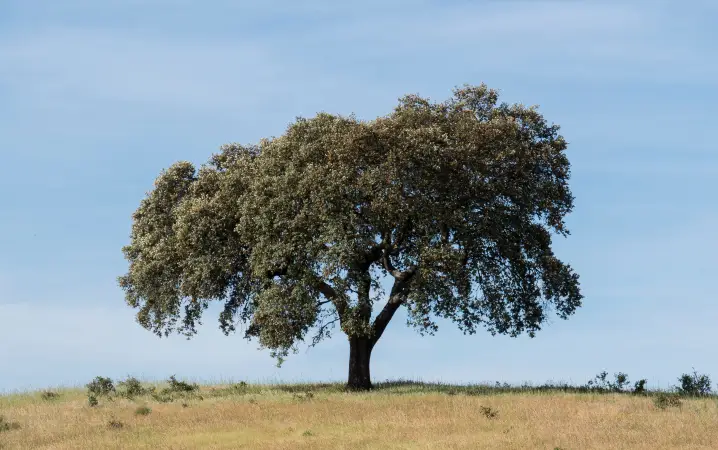
Before knowing how to remove tannins, people ate the sweetest varieties, such as the holm oak acorn. No wonder tribes like the Lusitani adopted this sweet and widely available nut in their everyday diet.
Here is a map with the distribution of the holm oak in Iberia. You’ll have a better idea of the availability of this particular variety in the area.
Most products I have tried were made from holm oak acorns. Again, this is not surprising; if it has the best flavor and is available in large numbers, it will be the most popular choice.
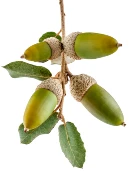
It makes me wonder if this species wasn’t present there, and all acorns were bitter, like in most places. Would acorns still be a big thing in Iberia? Would they still be connected to its history and culture?
It’s remarkable how much difference a simple detail, such as a tree species, can make.
The cork oak plays an important economic role
Setting aside acorns for a moment, there’s another oak tree that significantly impacts Iberia’s economy – the cork oak. This remarkable tree gifts us with cork, an invaluable material in the region. What’s truly fascinating is how the cork oak’s bark can regenerate, offering a sustainable source for harvest.
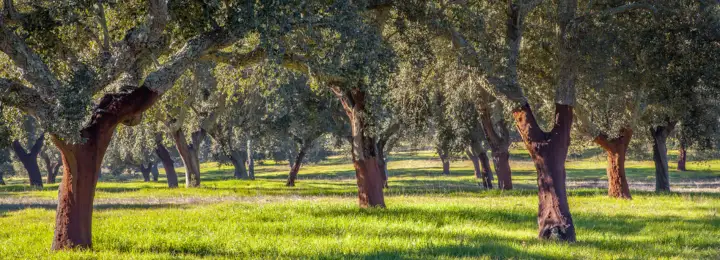
Around the beginning of the XVIII century, when cork started to be used to cover wine bottles, the demand for cork increased dramatically. Until then, Portugal was exporting cork from oaks that grew naturally. However, the Portuguese started planting cork oaks solely for harvesting, in order to meet the new cork demand.
Today, Portugal is the world leader in natural cork exports. It’s impressive that such a small country has a massive part of the world market. In 2021, Portugal set a new record of $1.269 billion in value in cork exports. Spain is also a big player, being the second largest exporter.
Iberian Typical Acorn Products
Acorns are an important part of my trips when visiting Portugal and Spain. Let’s explore some of my favorite acorn-related products.
Liqueur
I tried it in both countries, and it was similar (and delicious). They make it with the holm oak acorn that I mentioned above.
While I cannot match the skills these people gained through a lifetime of hard work, I can still share my acorn liqueur recipe, inspired by the one they have there.
Meat
Evidently, animal meat is not an acorn product. But I want to include it here because some animals are fed exclusively with acorns to improve the taste of their meat.
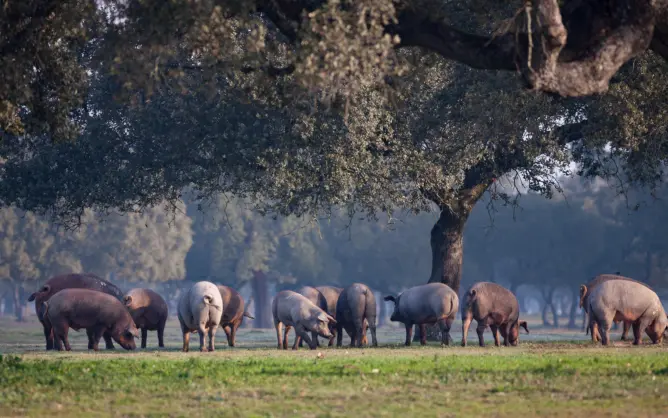
One of the best delicacies in the area is the famous “jamón” from the Iberian pig species. The “jamón” (in Spain), or “presunto” (in Portugal), is a dried ham. It can be done from any pig species, but the Iberian pig is the most valued.
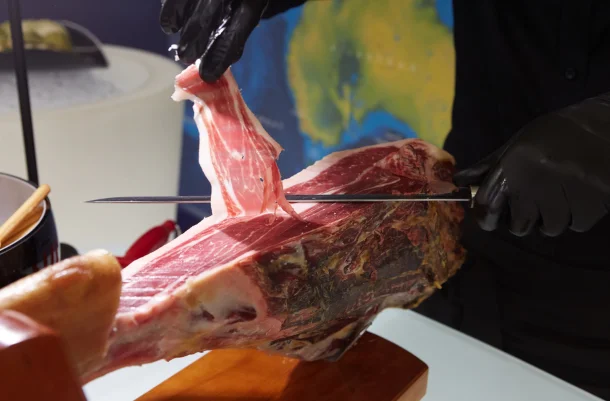
The best and most expensive ham is from a black Iberian pig exclusively fed on acorns. I have tried most types of ham in the region, and this one is truly exceptional.
Other products
People consume other acorn-based products in the region, such as coffee, flour, bread, and biscuits. But you probably heard about those too, as they are also becoming popular in the US.
One place I loved, which made all of these products and more, was the “Montado Freixo do Meio” farm, in the Portuguese region of Alentejo. Besides the more regular products I mentioned, they sell exciting things, like acorn honey and patê. There are even options for vegans, like acorn chorizo and even hamburgers. Their page is in Portuguese, but the different products are still worth looking at.
Unearthing the Acorn’s Legacy in Iberia
The acorn’s significance in the Iberian Peninsula transcends time. This nutritive treasure has been deeply woven into the region’s dietary and cultural fabric for millennia.
The acorn’s legacy in the Iberian Peninsula is both profound and enduring. It spans from ancient warriors who depended on them as a crucial part of their diet to modern farmers who use them to enrich the taste of their livestock.
Its role as both sustenance and a symbol of heritage showcases the enduring connection between nature and the cultures of this vibrant region.
